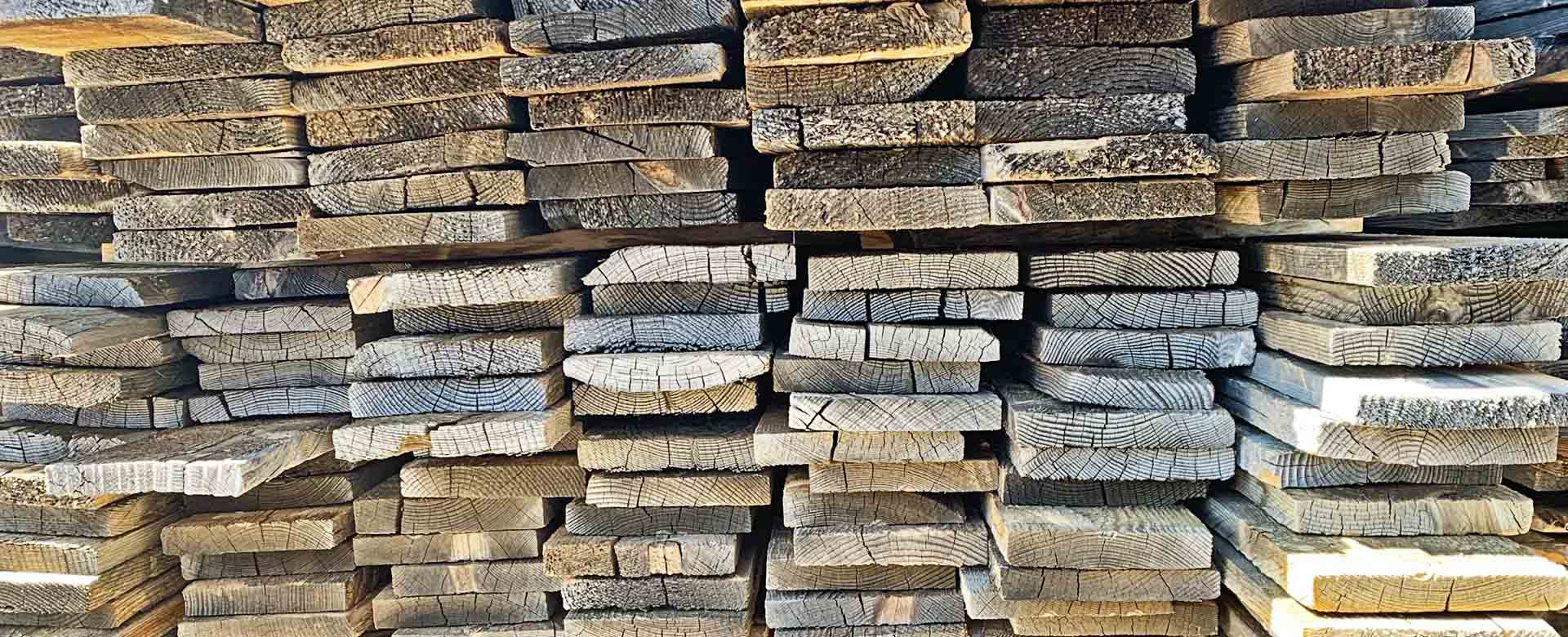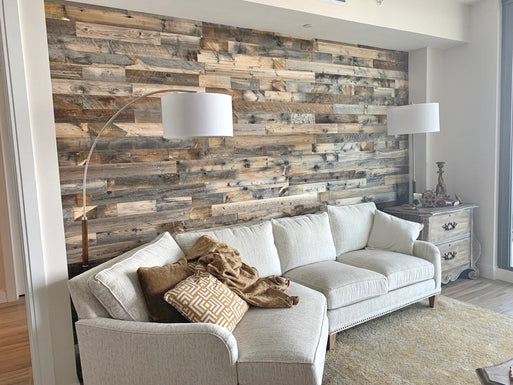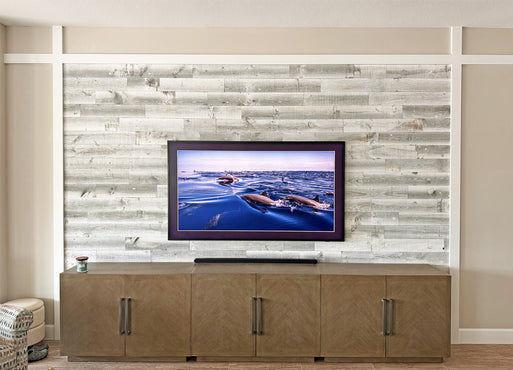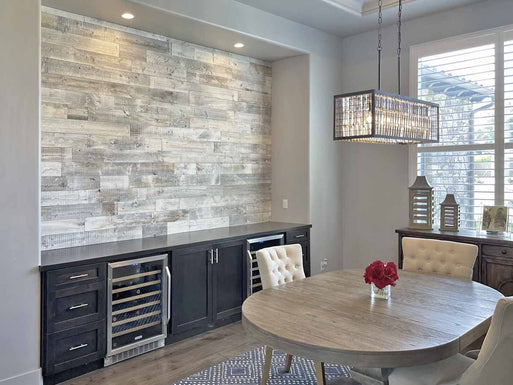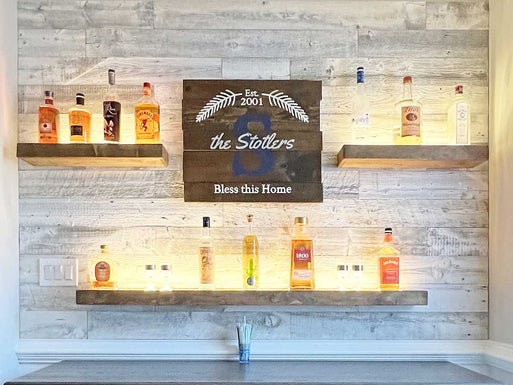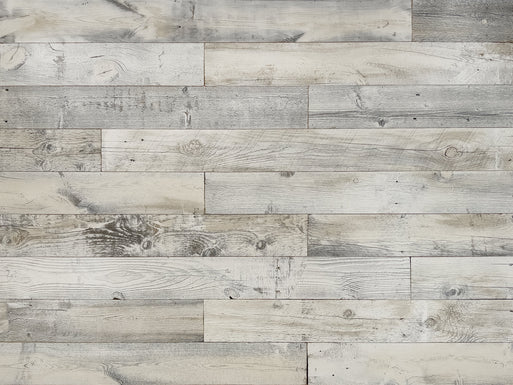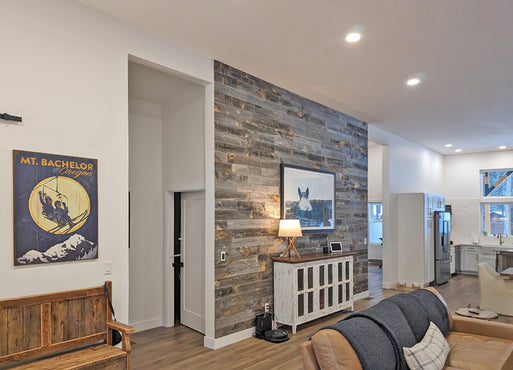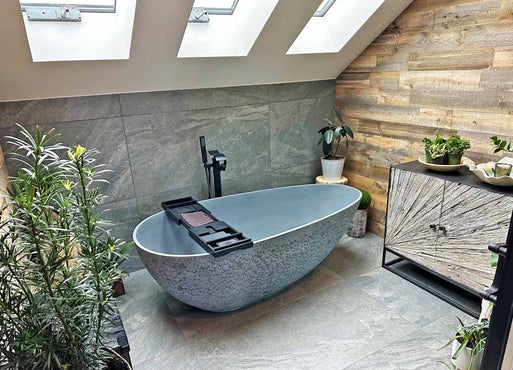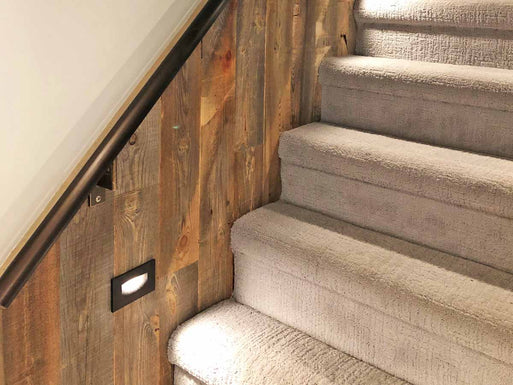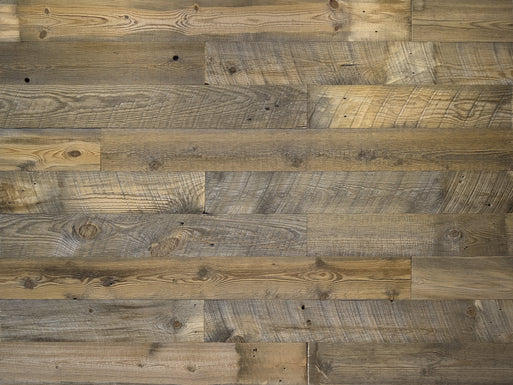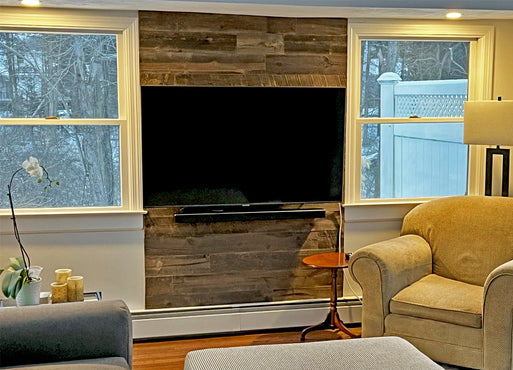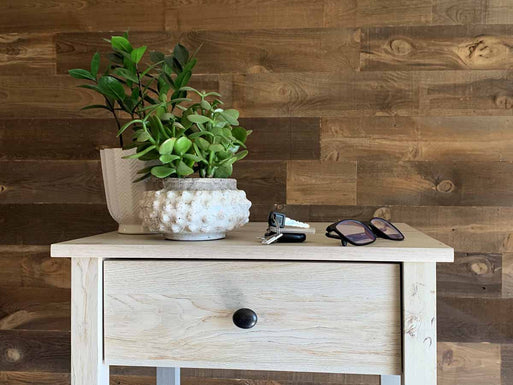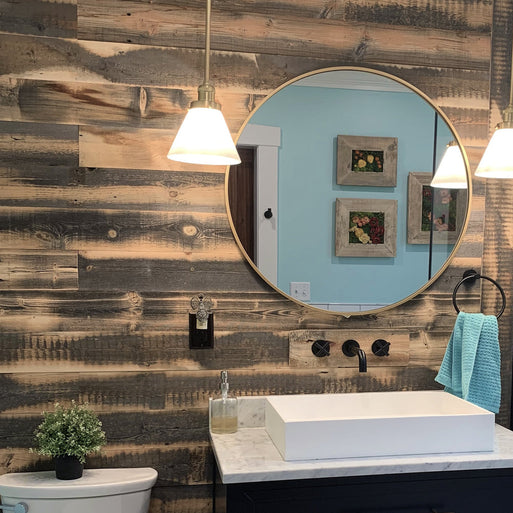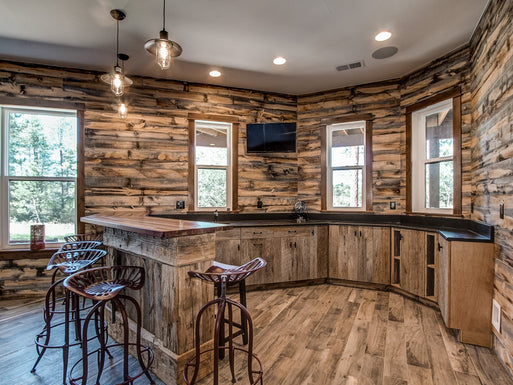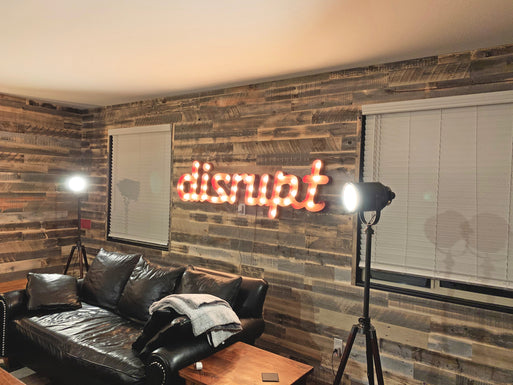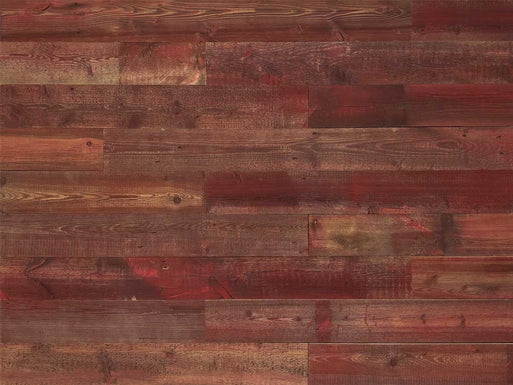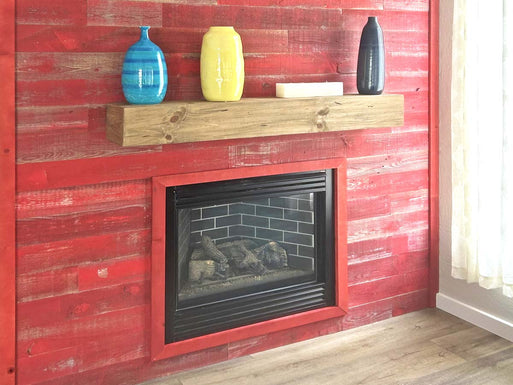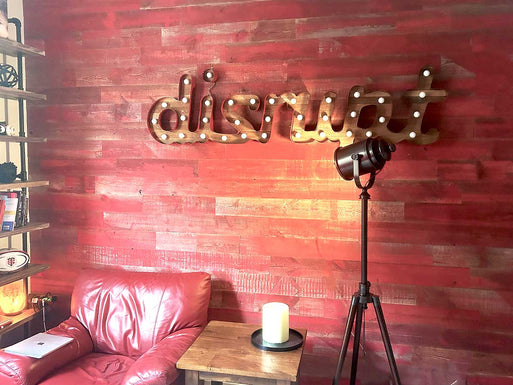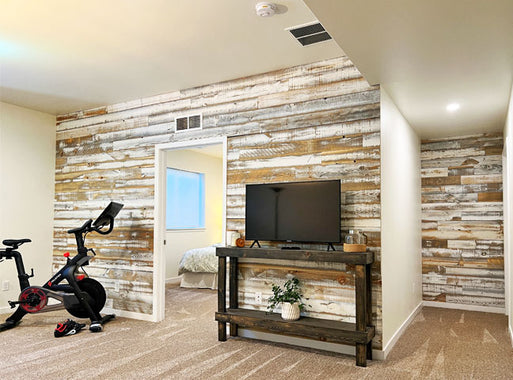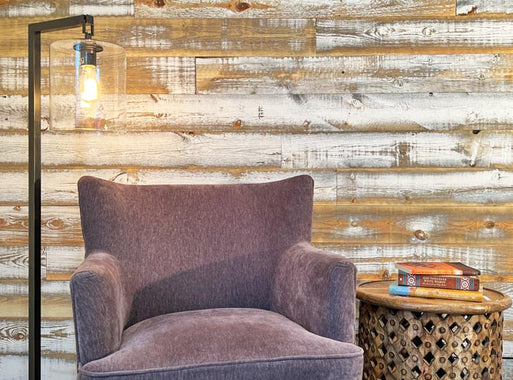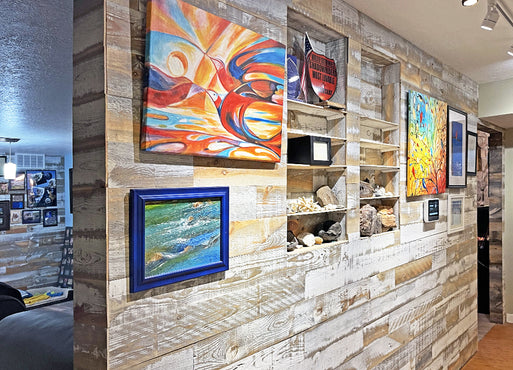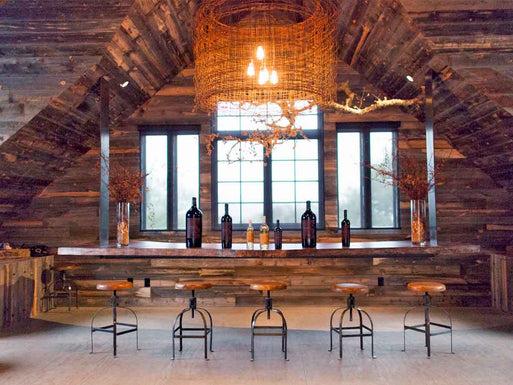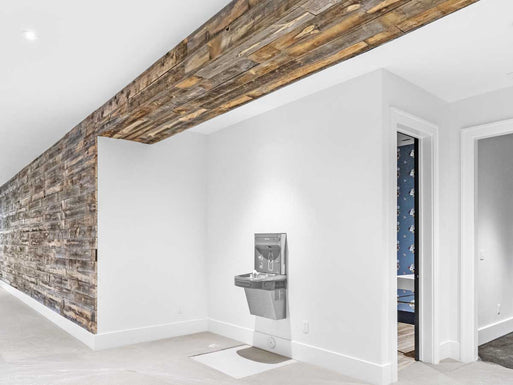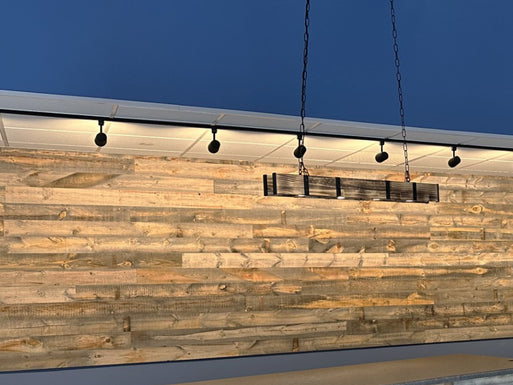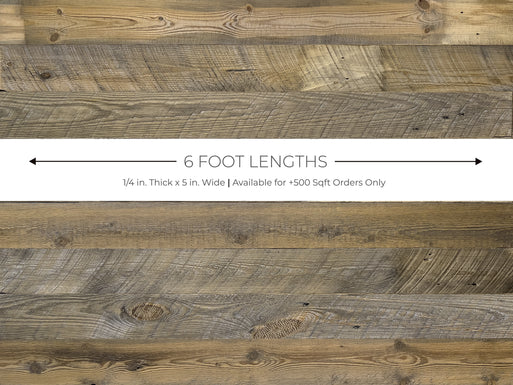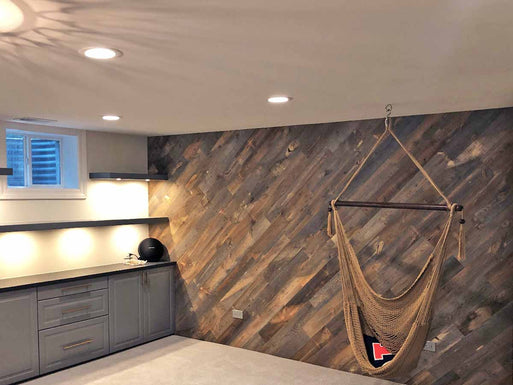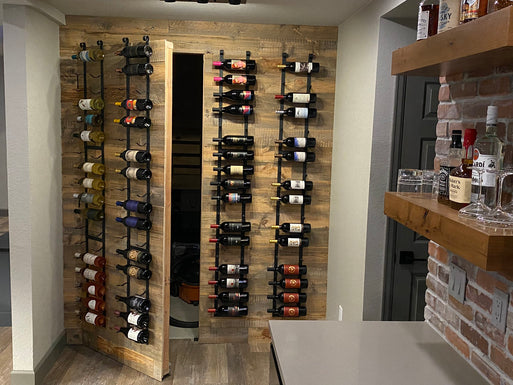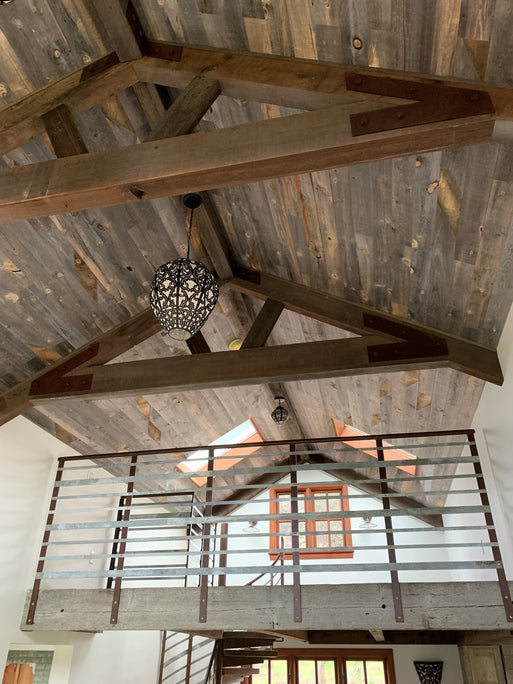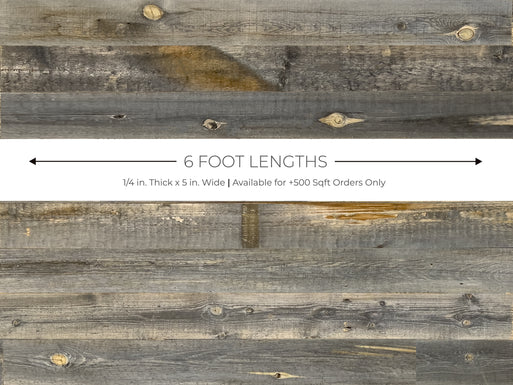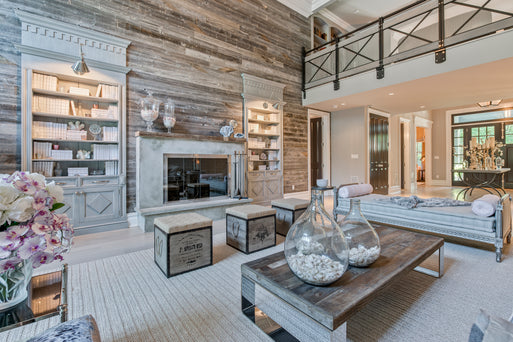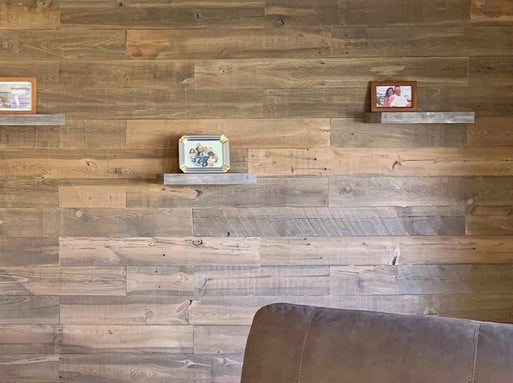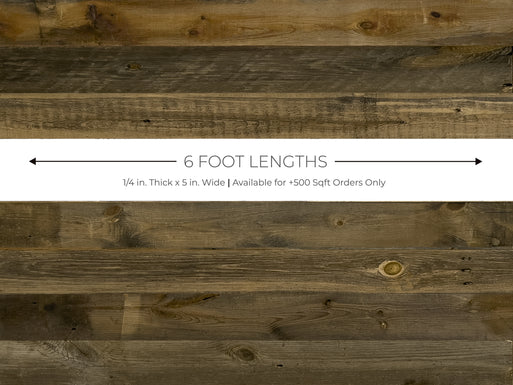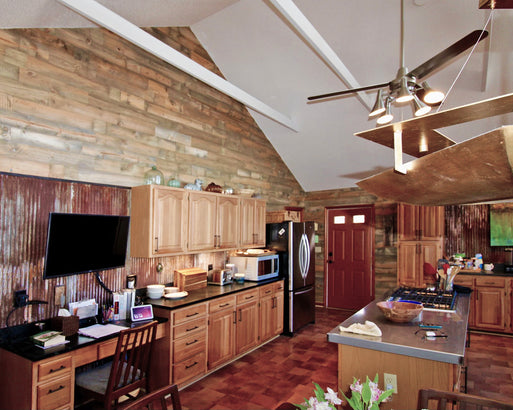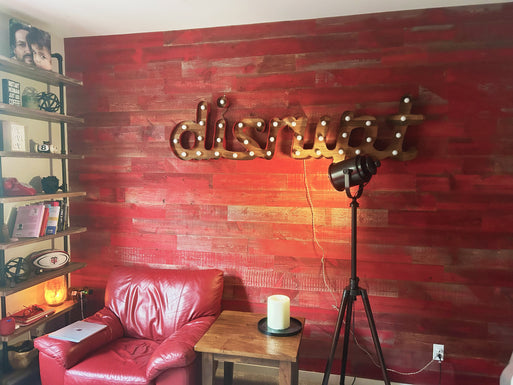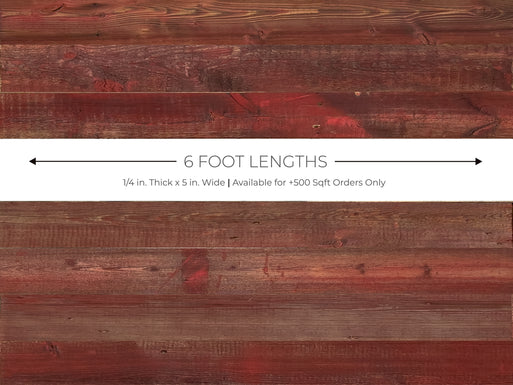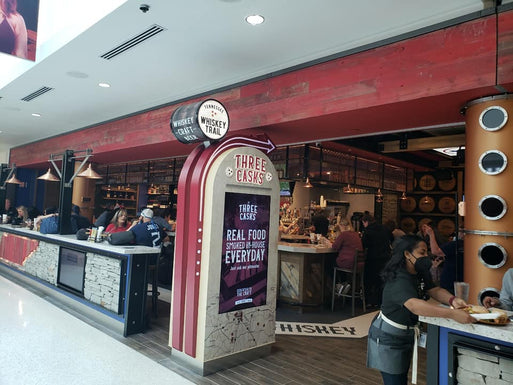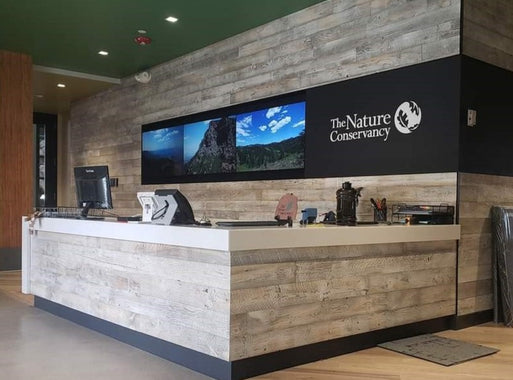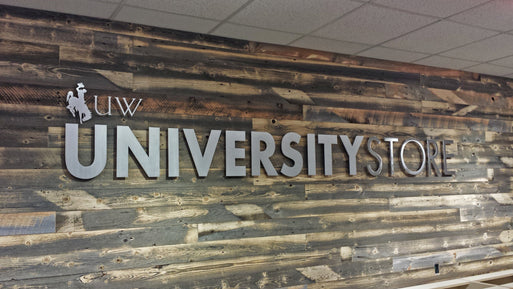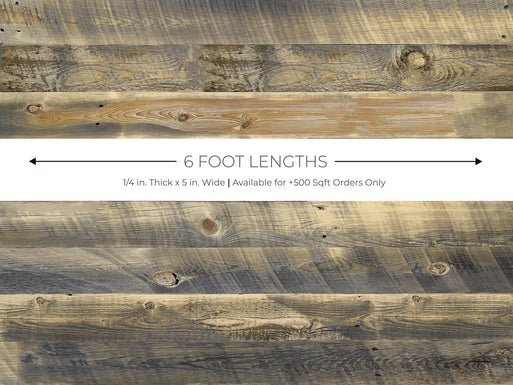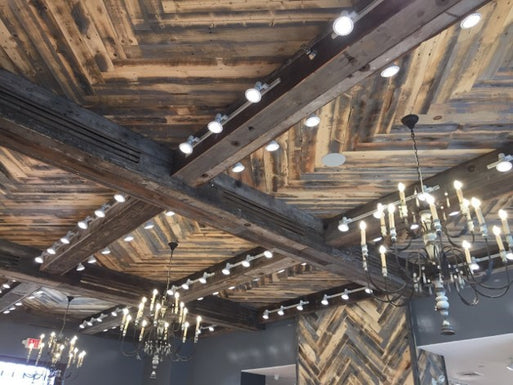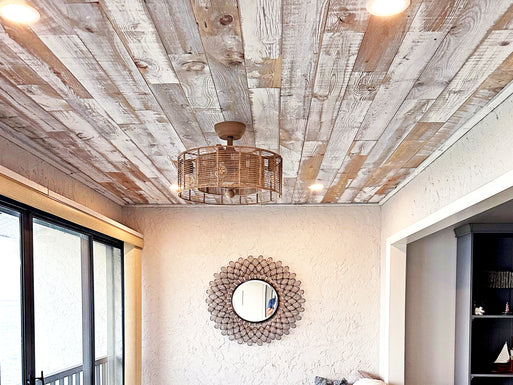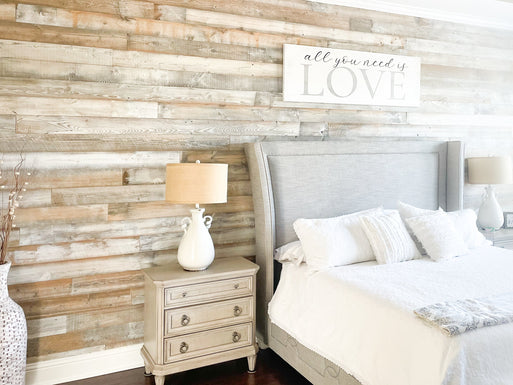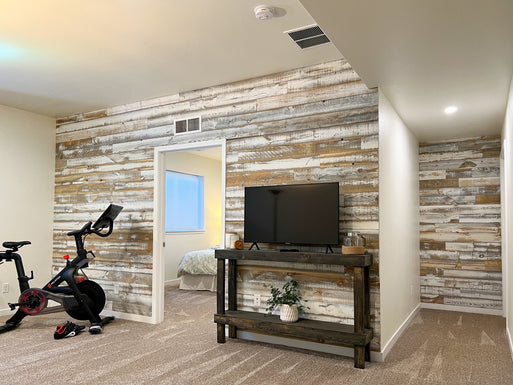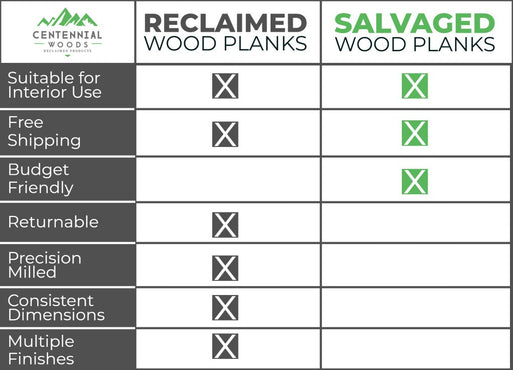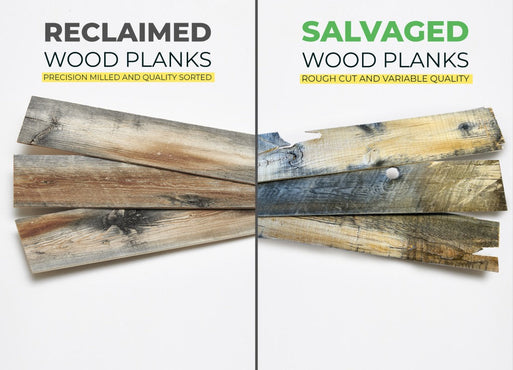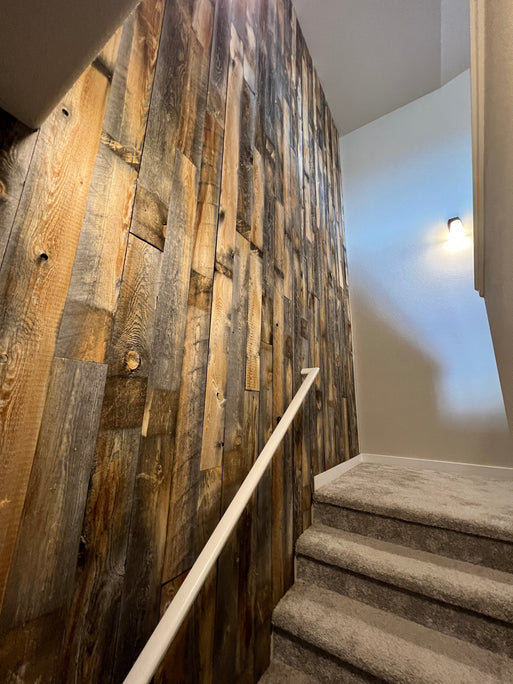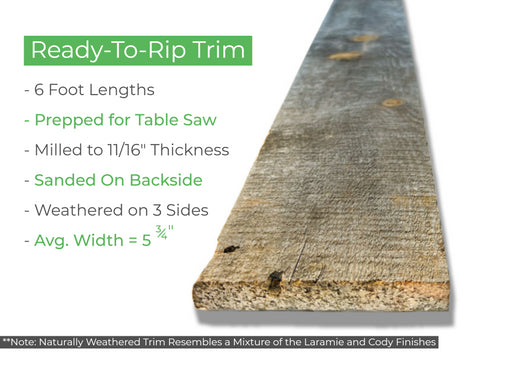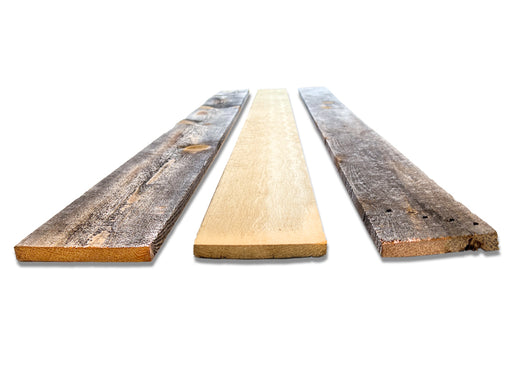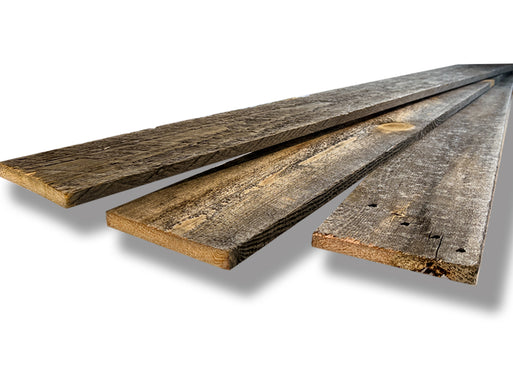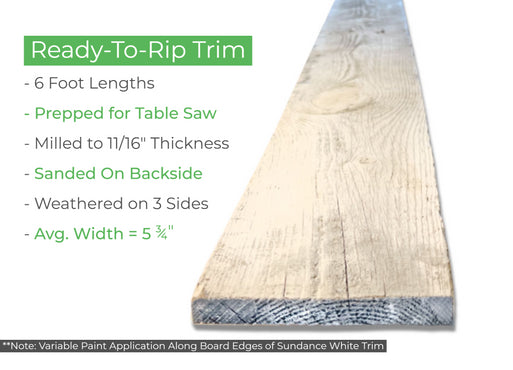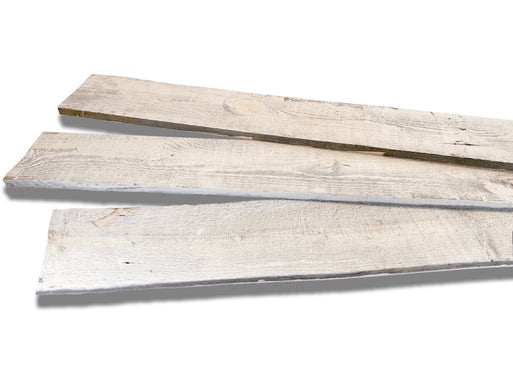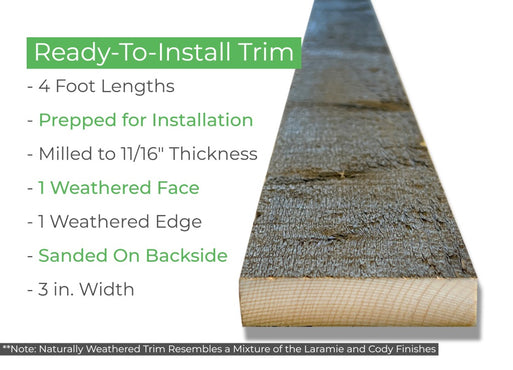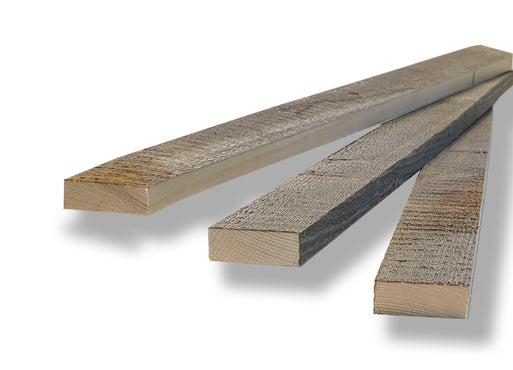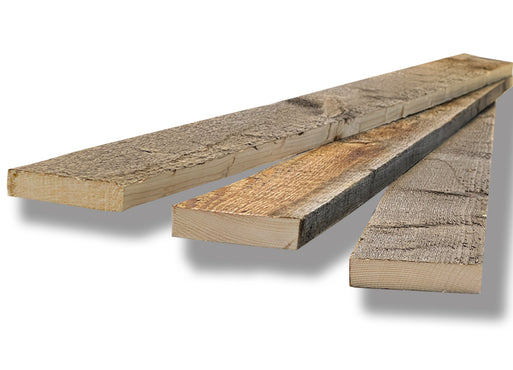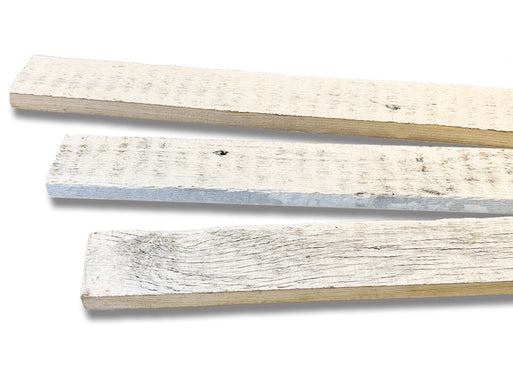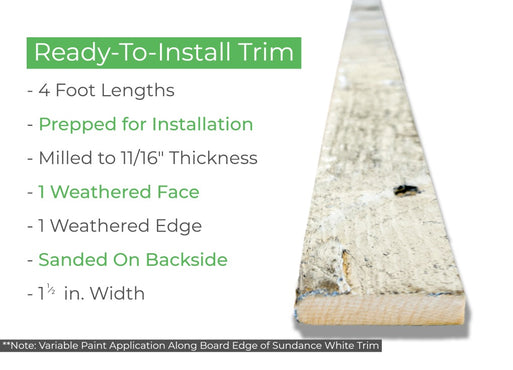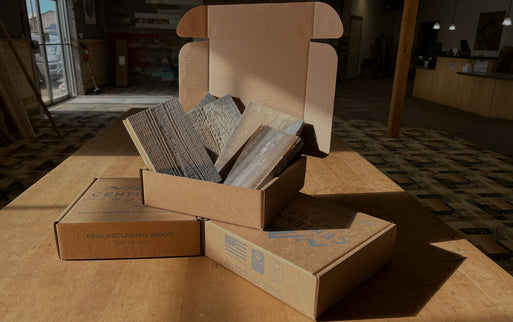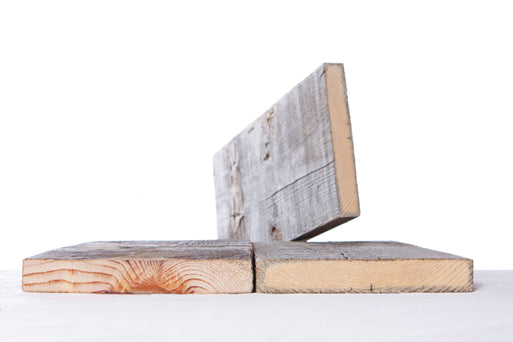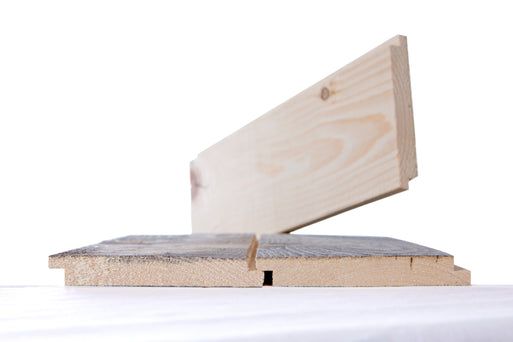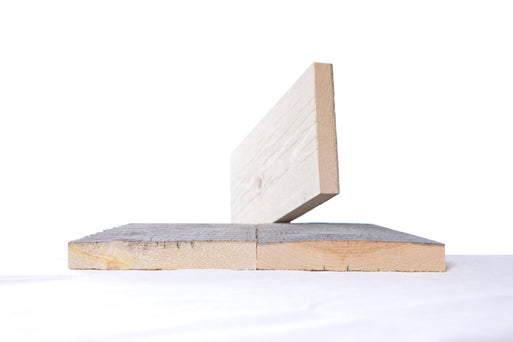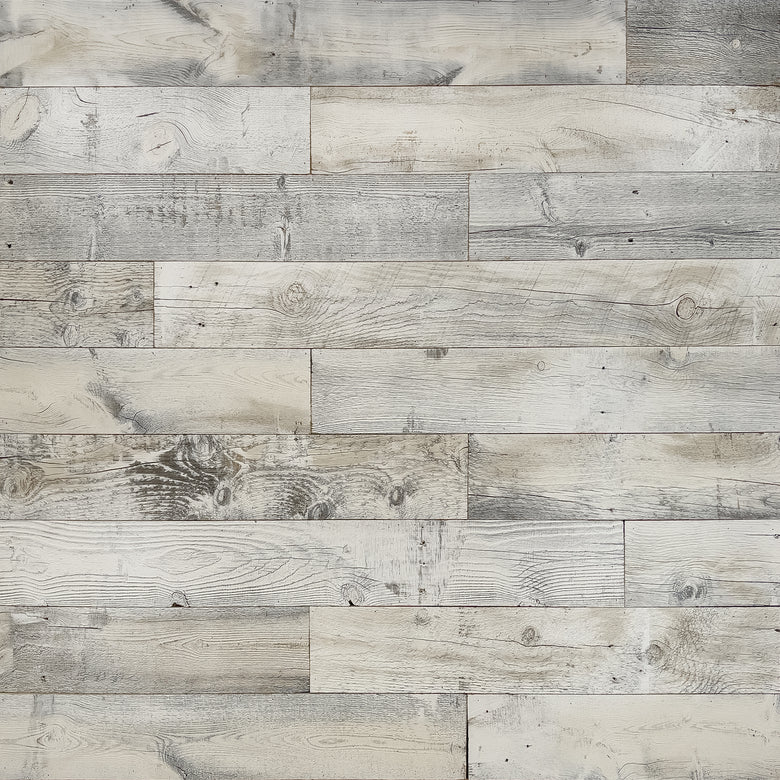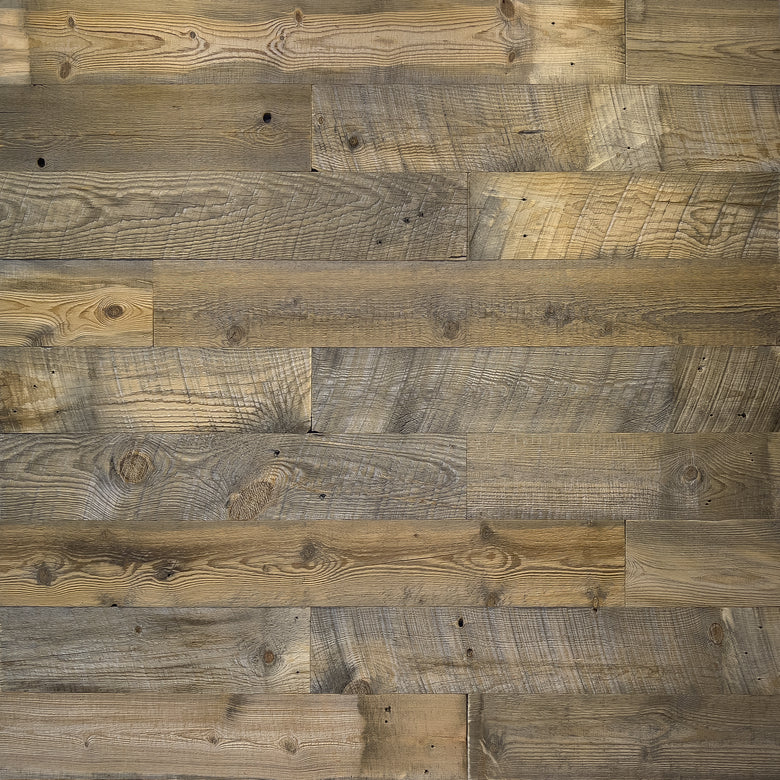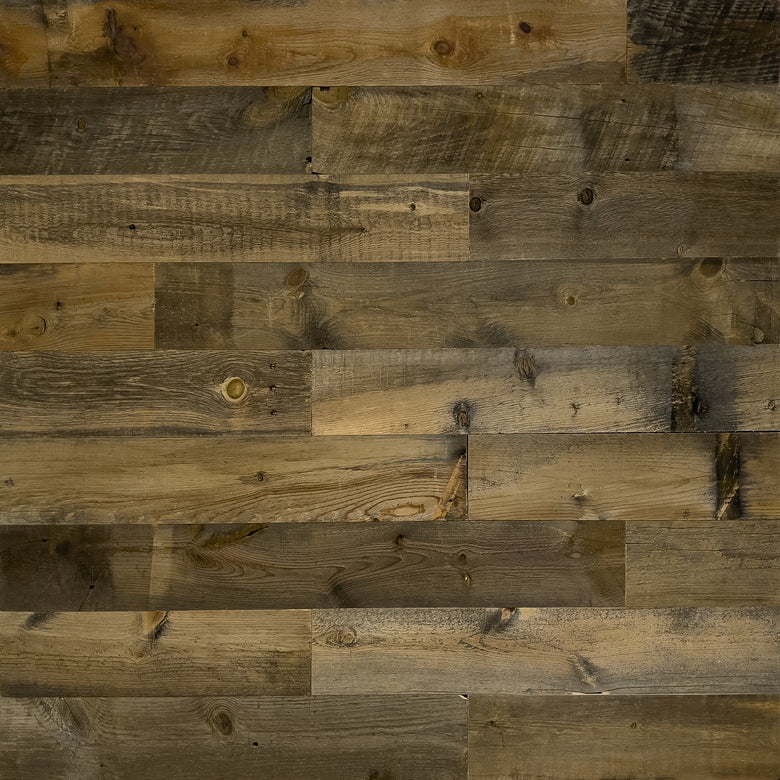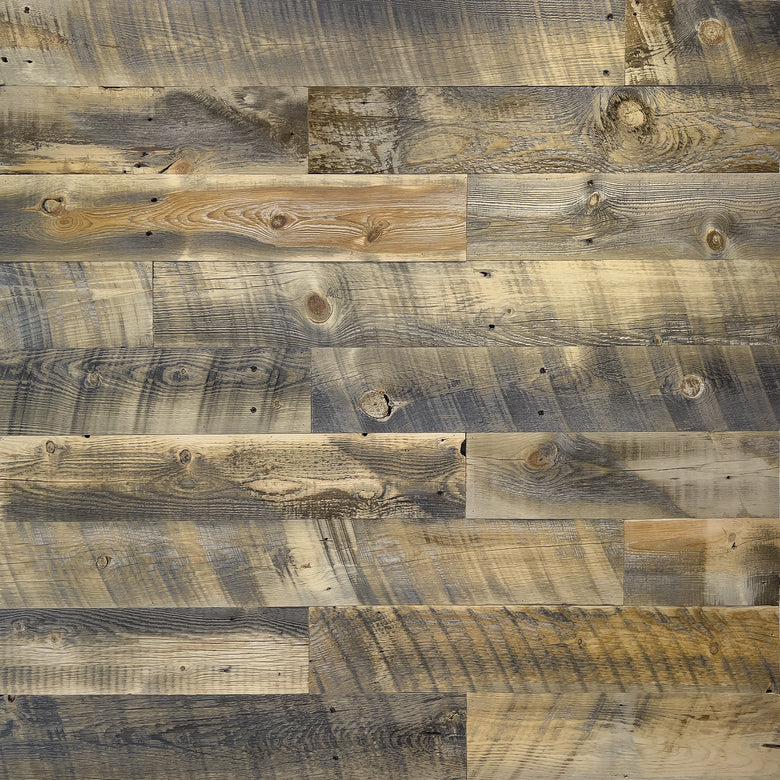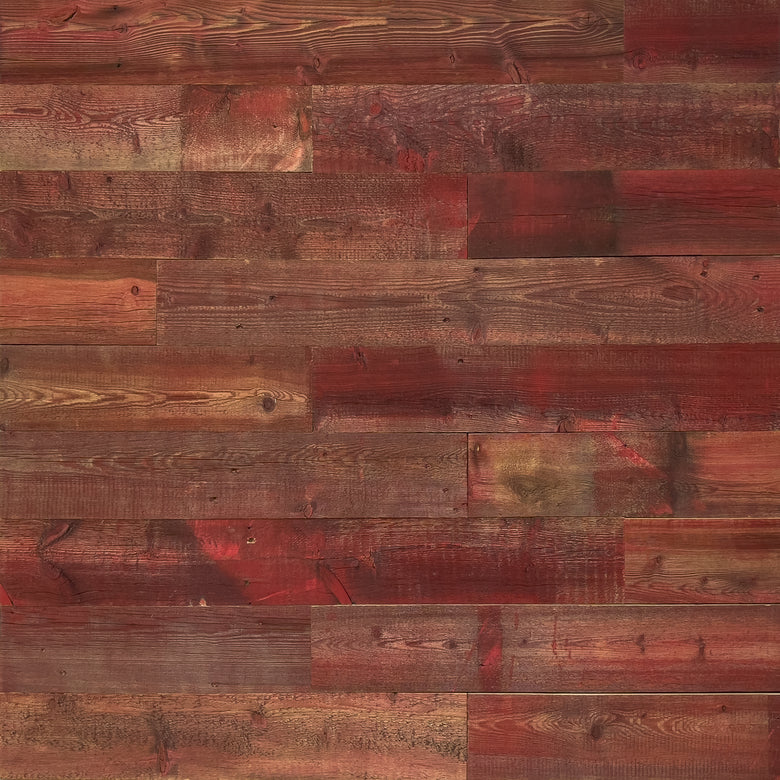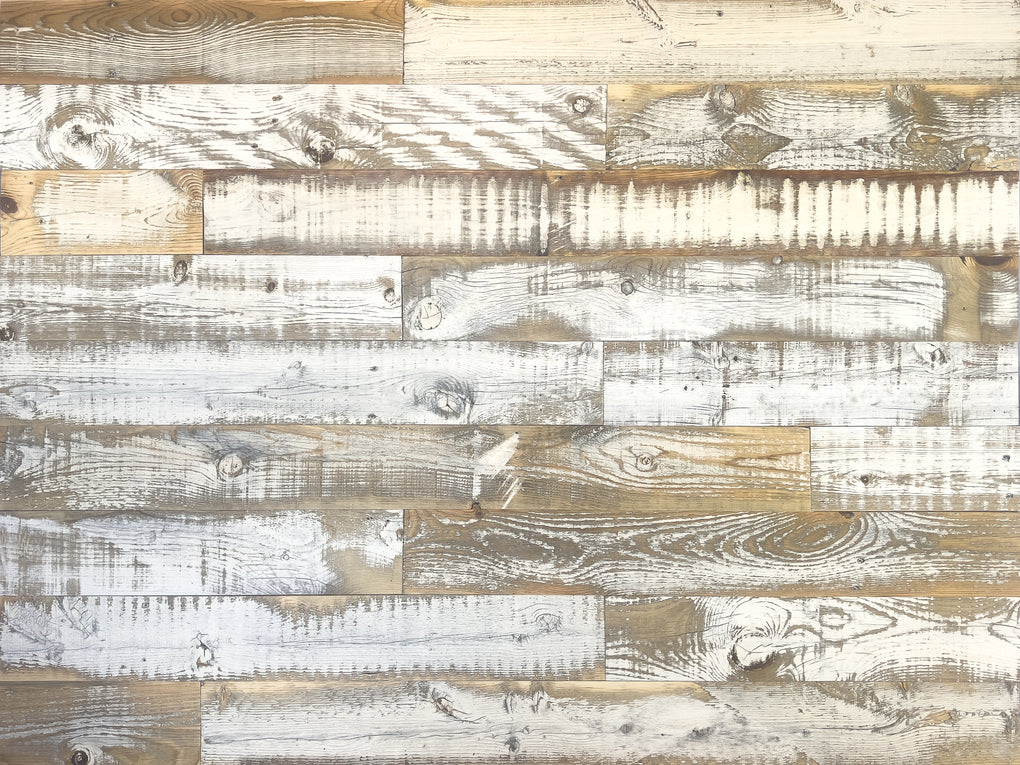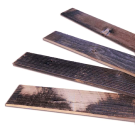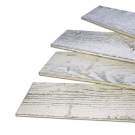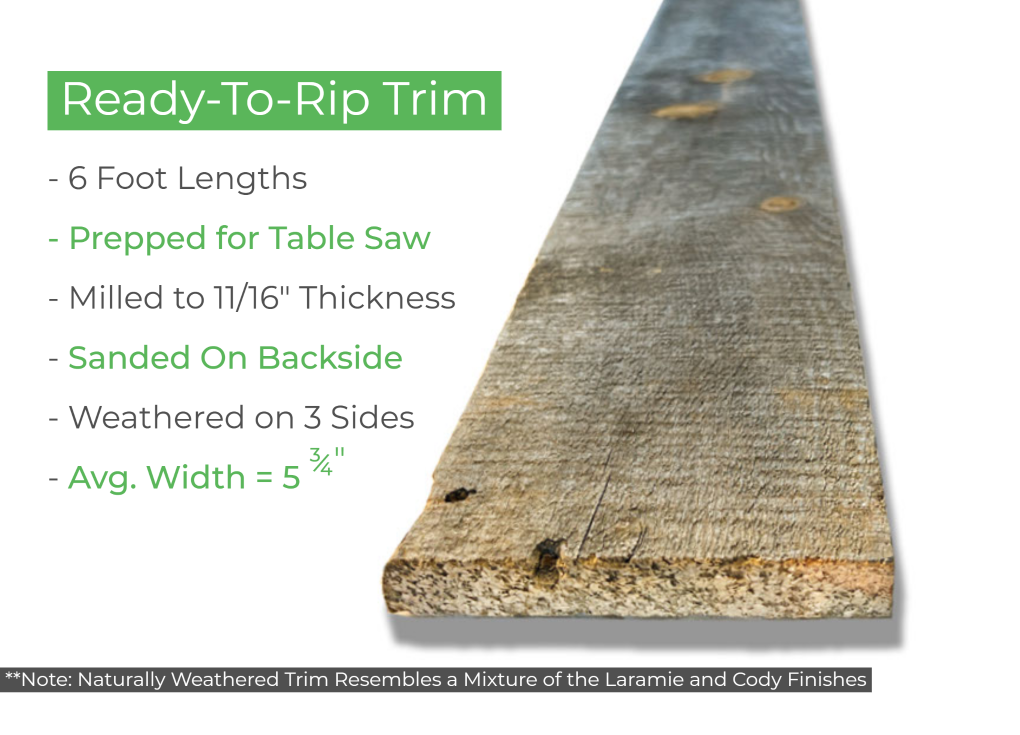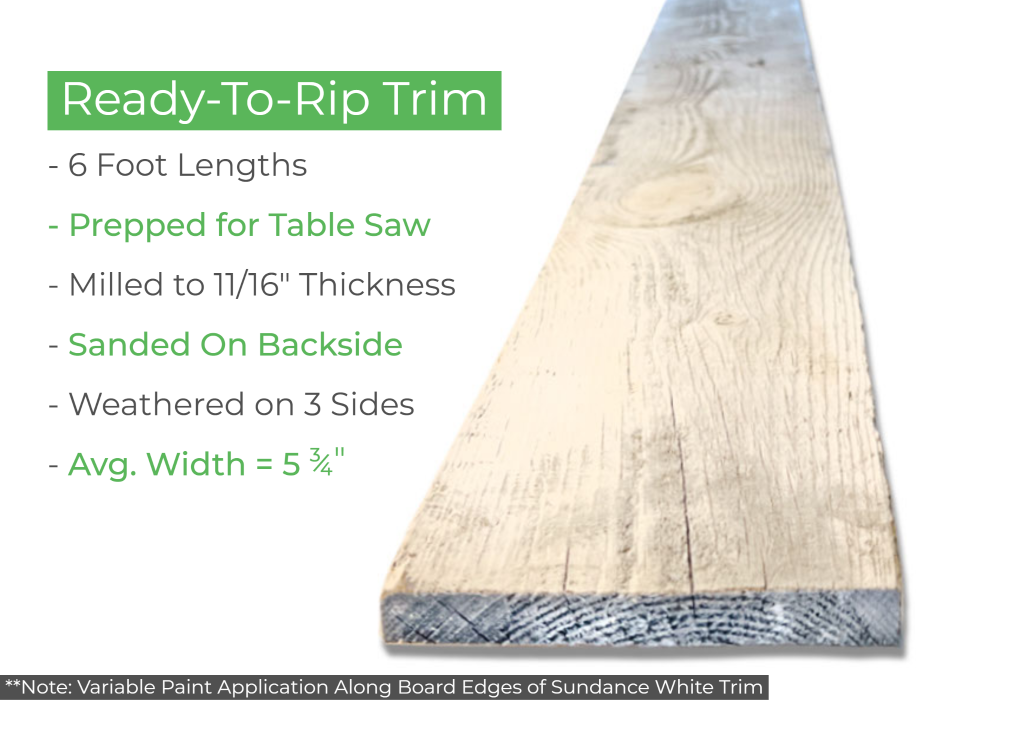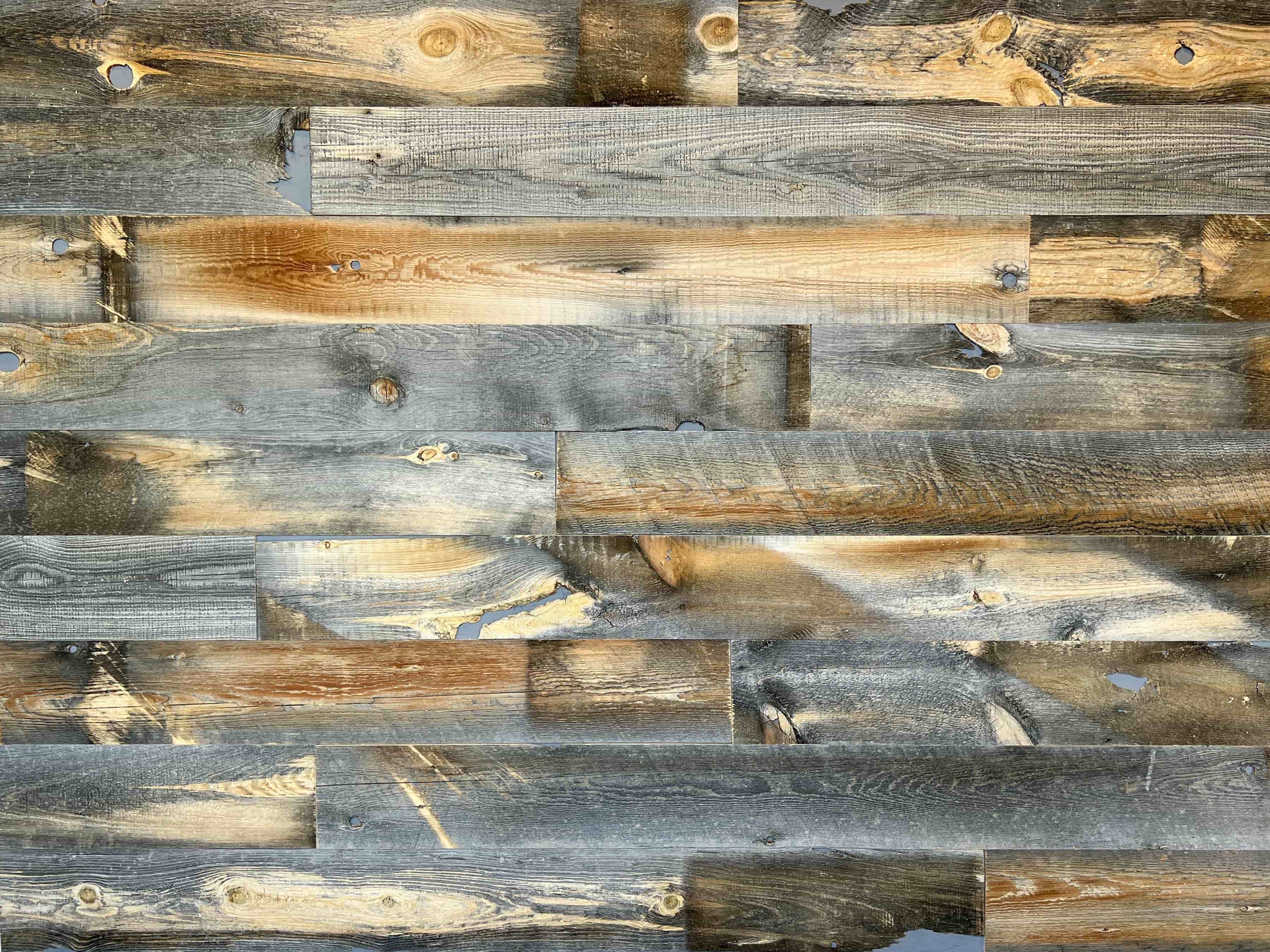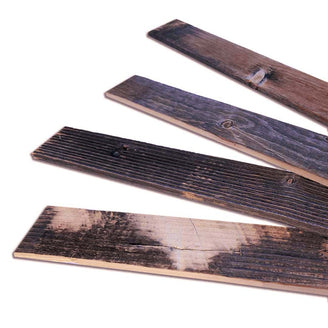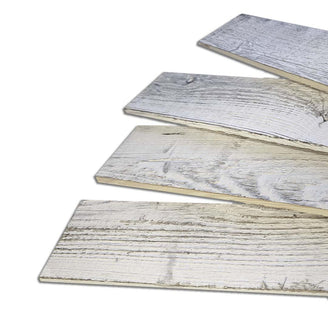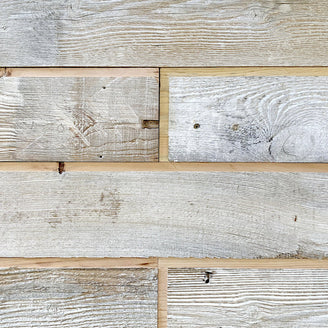What is reclaimed wood?
The popularity of reclaimed wood has surged in recent years thanks, in part, to home renovation shows, blogs, and social media. But what does reclaimed wood mean, why is it so popular all of a sudden, and what can it be used for?
Reclaimed wood is any wood that is recycled, or “reclaimed,” and used for a second purpose after it serves its original purpose. Reclaimed wood planks can come from a variety of old buildings, like barns and factories, or other sources, like gym floors, bowling alleys, fences, or sunken trees.
Once those wood planks have served their original purpose, professional reclaimed wood suppliers source and prepare the boards by treating them to eliminate smells, bugs, and mold. Reliable reclaimed wood suppliers will also check the wood for lead, formaldehyde, and other toxins.
Why is reclaimed wood so popular?
Reclaimed wood is not only popular for its character and history, but for its versatility as well. Because reclaimed wood boards have already been used, they have a beautiful, naturally weathered look that can add great accent and character to your home or business. The appearance makes reclaimed wood versatile enough to be used in a wide variety of projects - both indoor and outdoor.
Wood that’s been used and reclaimed is also more stable because it has lower moisture content.
The popularity of reclaimed wood can also be attributed to it being a more sustainable option than new wood. Recycling used wood boards is much more environmentally friendly than cutting down trees for new wood.
Different types of reclaimed wood
Once treated and prepared, reclaimed wood can be turned into a wide variety of products that can be used for renovations, improvements, and decor. Some of the more popular products that can be made using reclaimed wood include:
Reclaimed wood planks & reclaimed wood paneling

Reclaimed wood shelving

Wood trim
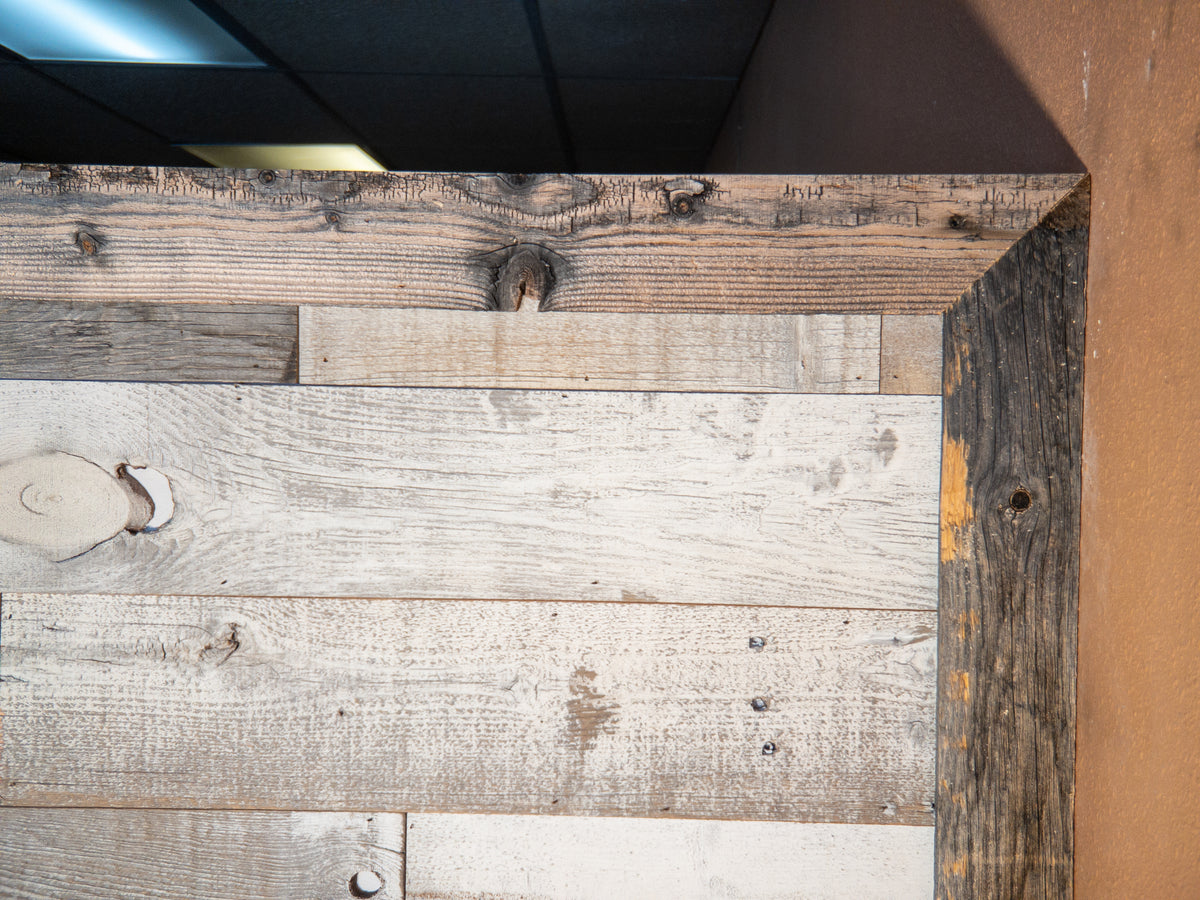
Siding

Wood tiles
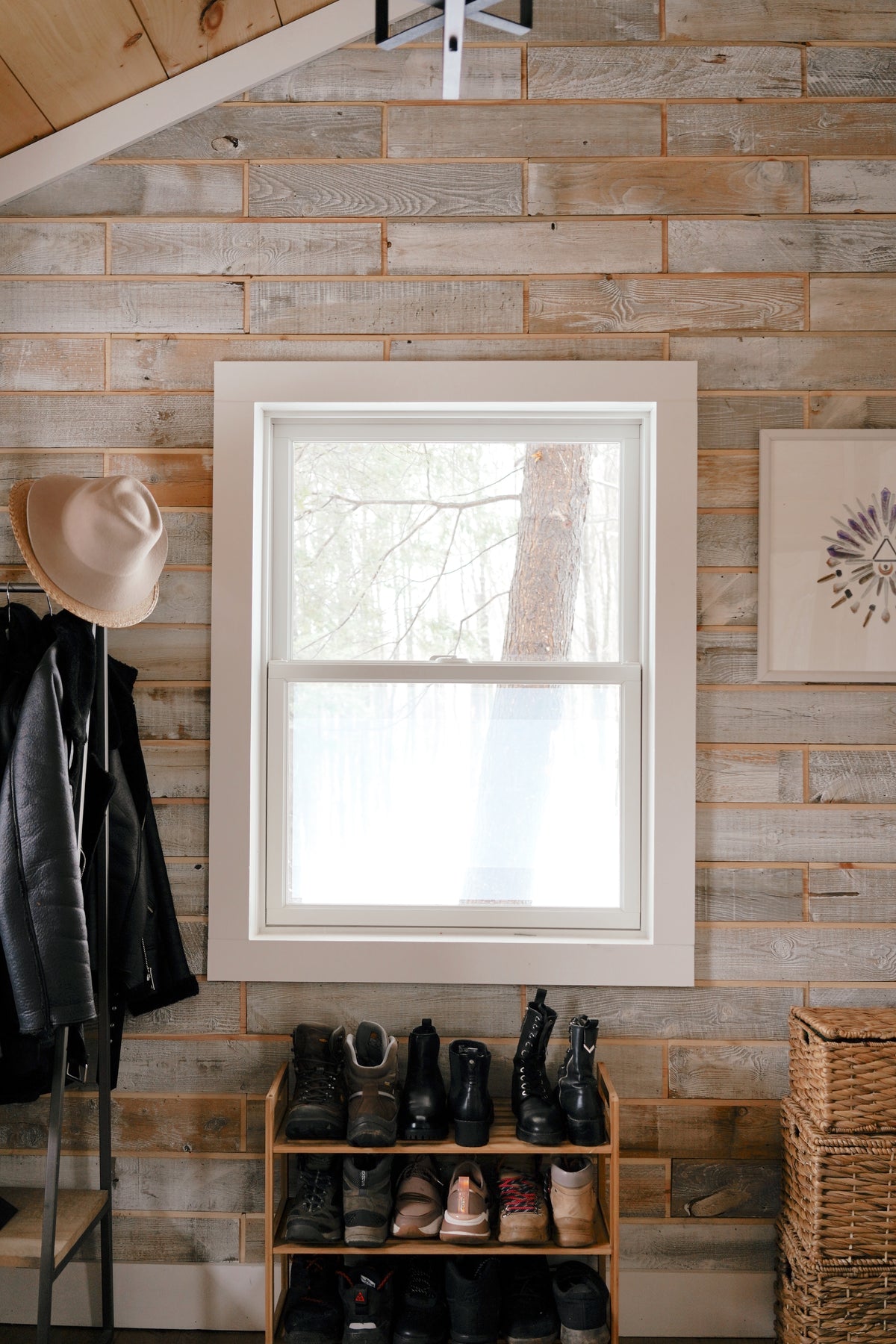
Flooring

What’s the difference between reclaimed wood and shiplap or other types of recycled wood?
Reclaimed wood is often confused with shiplap. So what’s the difference between the two, and other types of recycled wood - like barn wood?
Shiplap is often confused with reclaimed wood, but the name shiplap is more of a reference to the milling process of the wood than where it comes from. Shiplap can be reclaimed wood, but it can also be purchased as new boards that haven’t been recycled or reclaimed from another source.
But trying to compare reclaimed wood to barn wood is like trying to compare whiskey and bourbon. All bourbon is whiskey but not all whiskey is bourbon. Similarly, all reclaimed barn wood is reclaimed wood, but not all reclaimed wood is barn wood.
Essentially, recycled shiplap and barn wood are just specific kinds of reclaimed wood based on the original purpose of the wood panels. Reclaimed shiplap is made of shiplap boards, which were originally used on ships or as exterior siding. Reclaimed barn wood is made of barn wood boards that were originally used in barns.
The main differences between these specific kinds of reclaimed wood are based on the way the boards are milled. For example, reclaimed shiplap boards have indents because they were originally used to create a tight, waterproof seal with other boards.
Reclaimed wood and reclaimed shiplap are typically safer and more sustainable options compared to reclaimed barn wood.
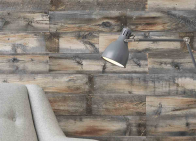
- Wood that’s reused after serving any purpose
- Various milling options based on supplier
- Environmentally friendly
- Color, dimensions & texture vary depending on the source
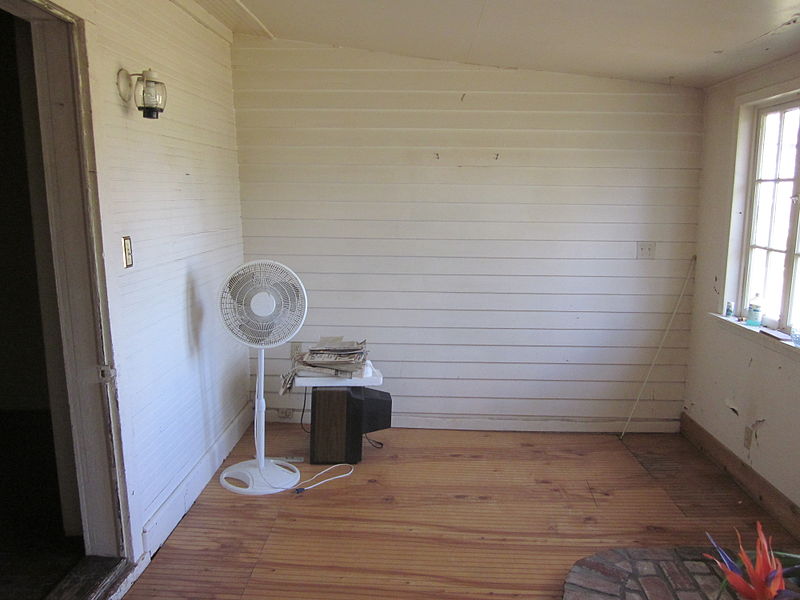
- Can be reclaimed wood or new boards
- Milling features rabbeted edges that overlap
- Weathered surface with several finish color options available
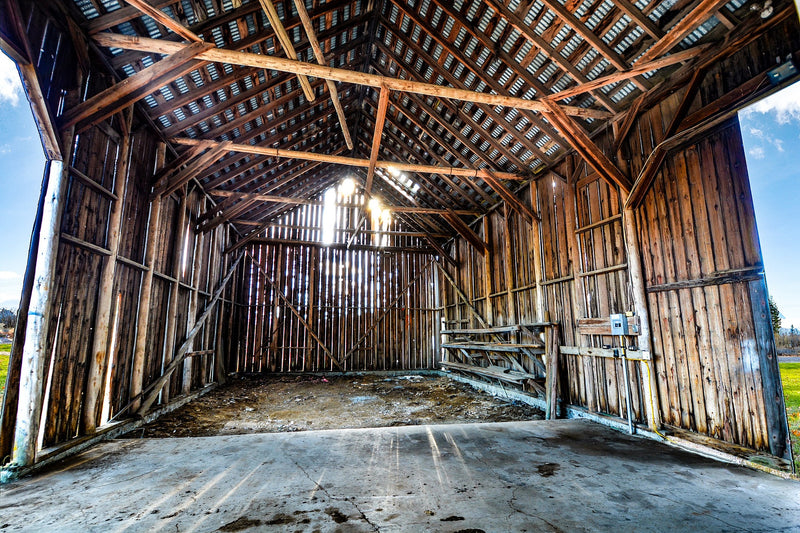
- Wood that’s reused after being sourced specifically from barns
- Can be milled into any kind of board as long as the wood is not rotting or cracking
- Typically features a rustic look
- Color, quality & dimensions can be inconsistent
- May have been exposed to insects, animal waste & toxic chemicals
What are the advantages and disadvantages of reclaimed wood?
Now that we’ve covered what reclaimed wood is and why it’s so popular, let’s break down the pros and cons of the product.
Advantages of reclaimed wood
If you’re considering a renovation project and aren’t sure on your wood options, here are some of the advantages of reclaimed wood:
- Environmentally Friendly & Sustainable
- Natural Color Variations
- Reduced Risk of Indoor Air Pollution
- Long-lasting
- Biophilic Design Element
- Product with a Story
- Often Made in the USA (Centennial Woods is!)
Environmentally Friendly & Sustainable
Using reclaimed wood boards is an environmentally-friendly solution for home design and renovation for several reasons.
First, reusing wood prevents carbon from being released into the atmosphere because all wood stores carbon throughout its lifetime. Reclaimed wood stores carbon while serving its first purpose, and still stores that carbon when it’s milled and reused for your project. Instead of burning or disposing of wood, which releases carbon into the atmosphere, reclaiming planks allows wood to store the carbon for decades.
Reclaimed wood that comes from certain sources, like recycled snow fences, is naturally free from toxins and insects. That means it’s also eco-friendly because it doesn’t require heat treatment, which is an energy-intensive process used to sanitize wood planks that come from sources like barns.
Sustainability is a buzzword often misused in the reclaimed wood industry. Many sources of reclaimed wood - like barns - are finite because once a barn is torn down, it’s gone. However, wood that comes from certain sources, like snow fences, is fully sustainable because those wood boards are replaced on a regular cycle.
Visit our blog to learn more about how reclaim wood can Reduce Your Carbon Footprint.
Natural Color Variations
Wood that is reclaimed and repurposed is often naturally weathered while serving its first purpose. Color variations can include gray, brown, blonde, and cinnamon tones.
The natural color and texture variations of reclaimed wood can also be enhanced or altered using finishes like sanding, skip-planing, brushing, wax, oil, or paint.
For more inspiration visit our Reclaimed Wood Colors blog.
Reduced Risk of Indoor Air Pollution
Reclaimed wood that comes from trusted and safe sources can help reduce the risk of indoor air pollution when used for indoor design projects.
Volatile organic compounds, or VOCs, are chemicals that can turn into vapor at room temperature and become part of our air indoors. VOCs are harmful and can come from a range of products we bring into our homes, but true reclaimed wood panels that come from trusted sources undergo testing to ensure they meet rigorous, third-party chemical emissions standards to reduce indoor air pollution and chemical exposure risk.
Suppliers that are GREENGUARD Certified and GREENGUARD Gold Certified meet various health-based criteria so you know they’re safe to use for any project.
Cost-Effective
Home renovation projects can be costly, but they don’t have to be. With lumber and plywood costs skyrocketing in recent years, reclaimed wood has often become just as cost-effective as the alternatives. This is particularly true if your project involves you affixing reclaimed wood boards directly to studs.
Long-Lasting
Reclaimed wood planks are long-lasting products that naturally come with imperfections. Many who have used reclaimed wood appreciate that any bumps or bruises that happen over the years simply enhance the character of the wood.
Biophilic
Biophilia is the feeling of being drawn to nature, and reclaimed wood is a great biophilic design element to add the feel of nature to a room.
Reclaimed wood planks can be used as both direct and indirect biophilic elements. Wood is hypoallergenic and promotes good air quality, but it also helps create a peaceful environment through its natural wood grain patterns and sound absorption.
Product with a Story
Reclaimed wood served a purpose already, and many boards will have a story behind them. It’s pretty interesting to think that a piece of wood in your room served a purpose as part of a snow fence in the mountains or a unique historic building.
(Often) Made in the USA
Many sources for reclaimed wood are located in the United States. Wood planks and boards are reclaimed from old structures, buildings, and other sources across the country and treated before being sold - meaning a lot of reclaimed wood products are made in the USA (including Centennial Woods!)
For more on Recycled Wood in the USA visit our blog.
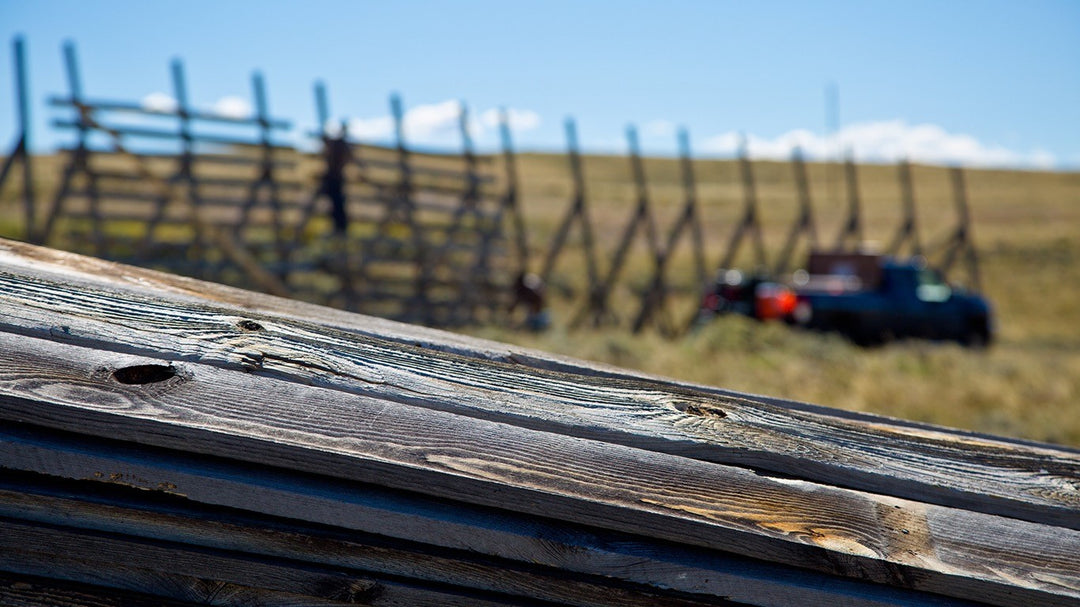
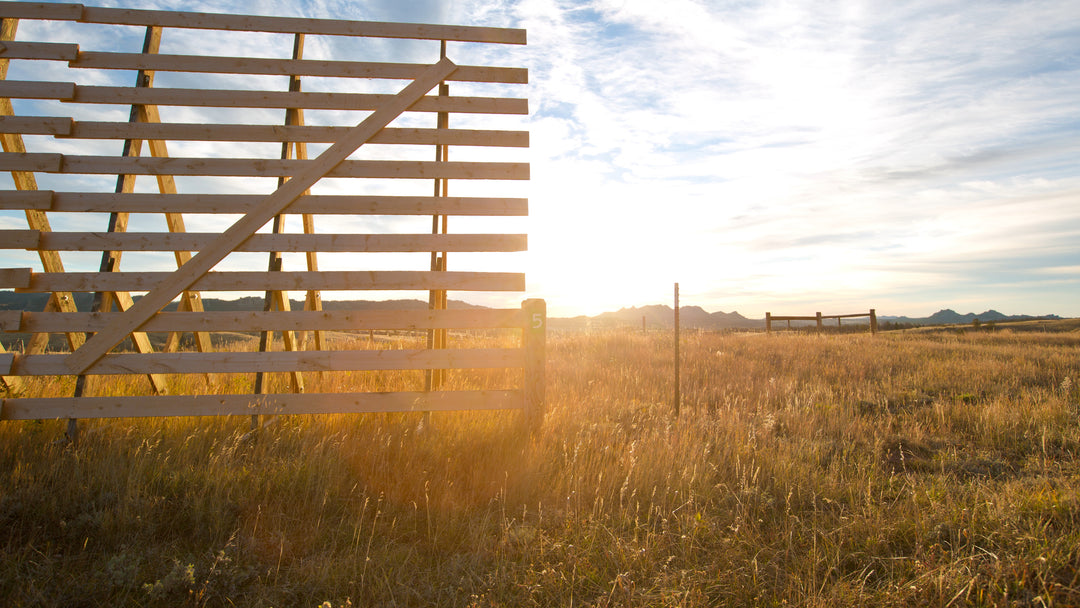
Disadvantages of reclaimed wood
There are also some downsides you should take into account if you’re considering reclaimed wood for a renovation project. Here are some of the disadvantages of reclaimed wood:
- May Require Woodworking Knowledge & Specific Tools
- Potential Supply Issues
- Flammability
- Inconsistencies in the Market
- Potential Toxin Exposure
- Embedded Nails
Installation
If you don’t have any carpentry skills, some reclaimed wood installations may be difficult to do alone. However, tools like chop saws, table saws, nail guns, or multi tools can certainly make that process smoother.
If you’re like many homeowners or business owners and you find the process intimidating or daunting, there’s no shame in hiring a professional to help with your reclaimed wood installation. You can also consider using the peel and stick method for an easier installation. Just keep in mind that peel and stick tends to be a more expensive option, and does not perform particularly well in rooms with excessive moisture.
Potential Supply Issues
Most sources for reclaimed wood are finite. Reclaimed barn wood, for example, may be harder to come by soon because when wood barns are torn down now, they’re often replaced by metal barns instead.
Flammability
If you’re planning on installing reclaimed wood in your home or business, you should be aware of the flammability risk. Reclaimed wood tends to be drier than new wood, which can make it more flammable.
If you’re concerned about flammability, there are flame retardant spray solutions that can be used on reclaimed wood.
Inconsistencies in the Market
Many businesses are now engineering new wood to look old like reclaimed wood. This faux reclaimed wood or engineered wood is not as sustainable as real reclaimed wood. Unlike faux and engineered options, genuine reclaimed wood is either carbon-neutral or carbon-negative.
Aside from faux reclaimed wood, the real reclaimed wood industry also sees inconsistencies in quality, color, and dimensions. So if you’re renovating your home or business and decide a few years down the line that you want to take on another project or build an addition, you may not find matching wood.
Exposure to Toxins & VOCs
Reclaimed wood boards that come from certain sources, like pallet wood and barn wood, may contain VOCs or toxins.
Planks from some sources run the risk of exposure to mold and mildew, termites and other insects, toxins like formaldehyde and lead paint, or animal waste.
It’s important to make sure you know where your reclaimed wood came from, what it may have been exposed to, and how it was treated. Keep in mind, kiln drying doesn’t eliminate the dangers of toxins, so it’s best to find reclaimed wood from a trusted, certified source.
Embedded Nails
Many sources of reclaimed wood have planks with nails embedded. Those nails are often difficult to remove before using the boards.
Before making any purchase, verify with your source that receiving your product nail-free is an option.

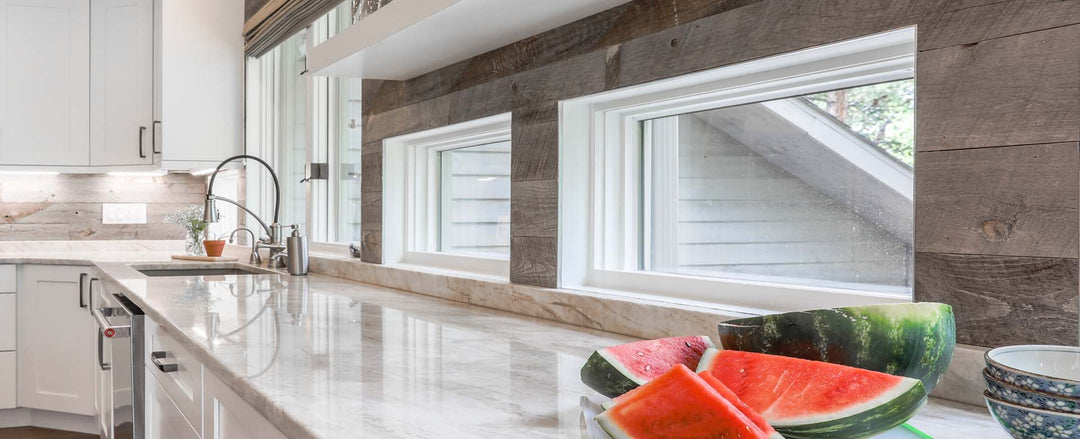
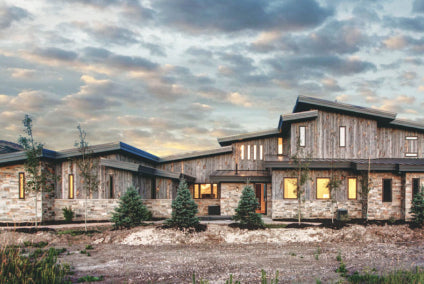
What can reclaimed wood be used for?
One of the reasons reclaimed wood is so popular is how versatile the boards are. Reclaimed wood can be used for a wide variety of applications and renovation projects - such as a reclaimed wood wall inside, or reclaimed wood siding outside.
Some of the most popular reclaimed wood projects include:
- Reclaimed Wood Accent Walls
- Reclaimed Wood Ceilings
- Reclaimed Wood Siding — Great for Commercial Buildings or Homes
If you want to incorporate reclaimed wood into your home or building on a smaller scale, you can also use reclaimed wood for upcycling projects and decor. Here are a few of our favorite examples:
Reclaimed wood is a great way to achieve popular aesthetics for your home, or add an accent to your design. The rustic and naturally weathered look of reclaimed wood makes it the perfect fit for country chic and minimalist interior designs.
What you shouldn’t use reclaimed wood for
While reclaimed wood can be used for a wide variety of indoor and outdoor projects, it’s best used for decorative purposes. Reclaimed wood is strong and durable, but in most cases it’s not ideal for structural use.
How do I install reclaimed wood?
If you’ve never installed reclaimed wood on a wall in your home before, you may be wondering if it installs like new wood. The first thing you should know is there are two different options for installing reclaimed wood: The peel and stick method or the traditional glue and nails method.
Peel and Stick
The peel and stick method involves reclaimed wood planks that have double-sided tape on the back so you can stick them to a clean, smooth surface.
This method requires fewer tools and is easier to install in small sizes, but can be more expensive. If you use this installation method in a hot or humid setting, you also run the risk of the adhesive failing, or the wood warping and cupping.
Tools you’ll need for the peel and stick method:
- Peel and stick reclaimed wood
- Pressure roller
- Saw
- Level
- Tape Measure
Glue and Nails
Your other option for installing reclaimed wood is the traditional method which involves using glue and nails to stick planks to a clear, smooth surface.
The traditional glue and nails method does require more tools and can be more difficult to install, but it’s typically more affordable. Another benefit of this method is that glue and nails don’t often come loose after installation, and nails prevent the wood from warping or cupping.
If you choose to use the traditional glue and nails method for installation, here are the tools you’ll need:
- Reclaimed wood
- Construction adhesive (Our favorites: Liquid Nails or Gorilla Construction Adhesive)
- Caulk gun
- Hammer or brad nailer (Our favorite: Milwaukee Cordless Brad Nailer)
- Finish nails (size ⅝” to 1 & ¼”)
- Saw
- Pencil
- Tape measure
- Level
Tips and Tricks for Installing a Reclaimed Wood Wall
Once you have your wood and the tools you’ll need for your reclaimed wood wall, you’re almost ready for installation. But there are a few things you want to make sure you do before you begin.
Before You Start Installing
The first thing to do is acclimate your reclaimed wood boards in the room where they’ll be installed. Having them in the room for at least two to three days before you start is best and helps avoid contraction and expansion during or after installation.
You should also make sure the surface you’re installing the wood on is prepared before you begin. Ideally, the wall or ceiling should be flat, clean and dust-free, structurally sound, and smooth. You may also want to consider painting the wall or ceiling a similar color to your reclaimed wood. This helps camouflage any gaps or knot holes.
Finally, you should try to have a plan and a good understanding of the installation process before you begin.
Mistakes To Avoid During Installation
There are some common mistakes you should be aware of when installing reclaimed wood:
Overthinking the installation
- Do your research ahead of time for a smoother installation. You want to avoid having to stop and look things up in the middle of your project.
- PRO TIP: Have an installation plan in place before you begin.
Not checking the level line
- Before you begin your installation, draw a level reference line as a starting point.
- PRO TIP: Starting your wood wall installation at the top or bottom of your wall is the easiest option.
Not staggering seams
- Remember during installation to stagger your planks - you don’t want the ends of your boards to line up and create seams that are too close together.
- PRO TIP: Try to keep the edges of the planks at least 8 inches apart from row to row.
Not distributing color variations throughout the wall
- One of the perks of reclaimed wood is color variation, so you want to make sure the colors are distributed throughout your wall.
- PRO TIP: Lay out one or two packs of planks before installation so you can see how the boards will look together.
Not using both glue and nails
- If you’re using the traditional installation method, it’s important you use both glue and nails to secure planks. Nails help keep the reclaimed wood from warping or cupping as the glue dries.
- PRO TIP: Use a continuous “S” pattern for your adhesive and avoid putting it near the edges of the plank so it won’t ooze out when you install it.
Not having a plan to camouflage knot holes
- Knot holes or gaps between boards will stand out if your wall or ceiling are a different color than the reclaimed wood you’re installing, so you want to have a plan to hide them.
- PRO TIP: If you didn’t paint your wall or ceiling before installation, you can use a sharpie to color in the spaces.
Caring for reclaimed wood
If you’re considering a reclaimed wood project, or have already incorporated it into your home or commercial building, you may be wondering how to care for reclaimed wood, or if you need to treat the planks. The answer to those, and other commonly asked questions, depends on what kind of project you’re using the wood for.
Does reclaimed wood require a lot of care and maintenance?
If you buy good-quality reclaimed wood from a trusted supplier, it shouldn’t require much more care and maintenance than new wood.
Depending on what kind of project you’re using the planks for, however, you may want to consider some preventative maintenance before installation.
Indoor Projects
If you used reclaimed wood for an indoor project like an accent wall or living room decor, you probably don’t have to worry about any kind of special maintenance since the boards aren’t being exposed to the elements. There are a few exceptions:
Areas With High Humidity
If your reclaimed wood is installed indoors but in an area that’s humid, like a bathroom, you should consider using a sealant on the planks to prevent moisture from warping the wood.
Make sure to spot-test any sealant on a spare piece of wood before using it on your planks. Some sealants can change the color of your reclaimed wood.
Walls Near Fireplaces
Keep in mind that reclaimed wood tends to be drier than new wood. This is a benefit in relation to the stability of the wood. However, if you install reclaimed wood near a fireplace, stove, or other heat source, you should consider a flame retardant solution on the wood to prevent any unintended ignition.
Outdoor Projects
If you installed reclaimed wood outside for something like siding, the planks may require more specialized care and maintenance to protect them from the elements.
Weather Exposure
Reclaimed wood that’s being used outdoors and exposed to elements should be treated with a protective water-resistant sealant. Make sure you spot-test the sealant on a spare piece of wood to check that it won’t change the color or appearance of the planks.
Does reclaimed wood rot?
Just like new wood, reclaimed wood that’s being used outdoors can rot if it’s not protected with a water-resistant sealant. Planks that aren’t sealed can warp or expand if they absorb moisture.
Keep in mind, moisture isn’t exclusively an outdoor issue; reclaimed wood boards can also absorb moisture and warp if they’re used in a humid area like a bathroom.
Does reclaimed wood weather or change color?
If you’re using reclaimed wood as exterior siding, you can expect some changes to the color of the planks over time. Sun exposure and other weather elements can alter the color of the wood.
Does reclaimed wood need to be sealed?
If you’re using reclaimed wood for an indoor project in a room that doesn’t have a lot of humidity or moisture, you don’t need to seal the wood unless you want an extra layer of protection.
How do you weatherproof reclaimed wood?
You can weatherproof reclaimed wood by using a waterproof sealant. If you buy your reclaimed wood from Centennial Woods, planks come pre-treated with Centennial Seal (our custom sealant) to protect them from the elements.
Just make sure you test any sealant you use on a small, spare piece of wood before applying it to your whole project because some sealants can change the wood’s color.
How to clean reclaimed wood
Cleaning reclaimed wood can be tricky because the surface is often highly textured or checked.
The best way to clean reclaimed wood is using a broom or a vacuum with a hose extension for dust, or cleaning it with a brush.
How to finish reclaimed wood
There are several different options when it comes to finishing reclaimed wood. Before you choose which is right for you, you’ll need to decide what color, texture, and level of protection you’re looking for.
Products like varnishes or oils can help you highlight the natural color of your wood or add some shine to the boards. There are also some eco-friendly finishes that will offer some protection in addition to highlighting the appearance.
The kind of texture you want your wood to have will also determine what kind of finish you should use. For a smooth and sleek look, go for a shiny finish. If you want to keep the wood’s texture, choose a matte finish.
Where to buy reclaimed wood?
The best place to buy reclaimed wood is through a certified reclaimed wood supplier. But no matter where you buy from, there are some things you need to ask about and look for when you’re purchasing reclaimed wood planks.
What you should look for in reclaimed wood:
- A Trusted, Safe Source: Make sure you know where your wood is coming from and what it’s been used for
- No Exposure: Make sure your wood wasn’t exposed to mold, insects, chemicals, or toxins
- The Right Treatments: Make sure your wood has been properly treated and cleaned
- Good Certifications: Trusted, safe reclaimed wood suppliers will be certified by organizations like the Forest Stewardship Council (FSC) and the Sustainable Forestry Initiative.Look for a source that’s FSC® Recycled to ensure you’re buying a product that comes from a responsibly-managed, FSC-certified forest.
What to Know Before You Buy
From local contractors
Buying wood from local contractors will take some effort and patience on your part. Make sure you get permission before taking any wood from a demolition site, and keep in mind what kind of structure you’re taking the wood from so you’re aware of any potential exposure to harmful matter.
From big box stores
The biggest thing to watch out for from big box stores is faux reclaimed wood. Many products in the stores will have the words reclaimed wood in the name but will actually be a product engineered to look like reclaimed wood.
If sustainability and eco-friendliness is important to you, keep in mind that real reclaimed wood from big box stores was also likely kiln-dried.
From Facebook Marketplace
Reclaimed wood from Facebook Marketplace will require some vetting because you’re buying from an individual, not a supplier. Make sure you check with the seller and ask about any exposure to toxins, chemicals, insects, or mold. Also, check the quality of the wood in-person if possible. It’s common for the wood to look great in pictures and be almost unusable once you receive it.
From distributors
Reclaimed wood can be purchased through suppliers and distributors online. If you want to avoid exorbitant shipping costs, you can try to find a local or regional distributor where you can make an in-person purchase.
If you find a local or regional distributor, make sure to check the wood, and ask where the boards came from and whether there was any exposure to harmful chemicals, toxins, insects, or mold. If you’re purchasing wood online, you should also thoroughly check that the source is incredible by looking for legitimate reviews, certifications, and a physical address for the supplier.
Keep in mind that when you buy from a distributor, whether in person or online, you’re automatically paying a premium because distributors are the middleman between you and the source of the wood. Whenever possible, it’s best to try and buy wood directly from the source.
The Best Place To Buy Reclaimed Wood
Buying reclaimed wood from a trusted, certified supplier is the most sustainable and safe way to purchase boards. A good supplier will make sure you’re completely informed about the source of the wood you’re purchasing, and will ensure it is free of any insects, chemicals, and toxins.
One of the best places to buy reclaimed wood is Centennial Woods, the world’s largest supplier of sustainable reclaimed wood. Since 1999, Centennial Woods has built and maintained snow fences in Wyoming, and reclaimed the wood after seven to 10 years to repurpose it for home products.
Benefits of buying from Centennial Woods:
- Naturally weathered: Wyoming weather is intense and naturally ages and weathers the boards, making each plank unique
- No infestation risks: Our reclaimed wood’s original purpose dries the boards naturally, making them uninhabitable for insects
- Carbon-negative: Because reclaimed snow fence wood is naturally dried, it doesn’t require energy-intensive kiln drying
- Completely safe: Our reclaimed snow fence wood has never been treated with chemicals or exposed to things like animal waste or toxins
- Certified sustainable: Our reclaimed snow fence wood is FSC® Recycled, and GREENGUARD Gold Certified
Real reclaimed wood from trusted sources makes a great addition to any home, whether you’re using it for a project inside or outside. But making sure the boards you’re using are safe and were reclaimed responsibly is important, and Centennial Woods is one of the most trusted suppliers.
Our reclaimed wood boards are sustainable, safe, durable, and unique. Reclaimed snow fence wood is the perfect way to add a touch of character and nature to a wide variety of home projects.

